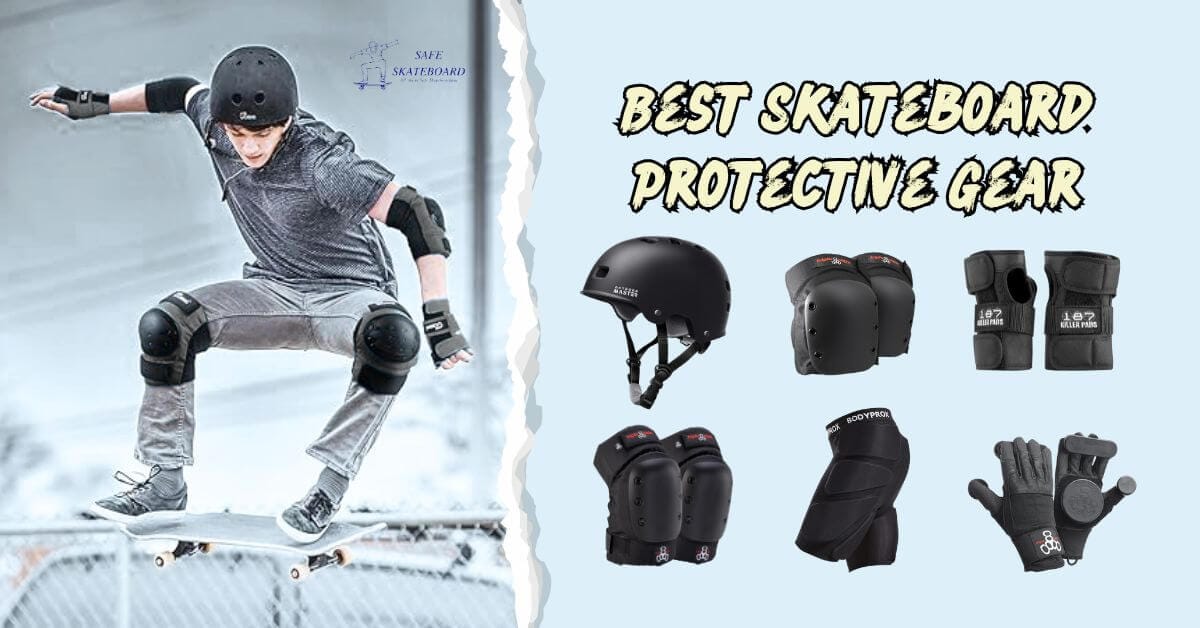Traveling with your skateboard can be challenging, especially when you want to bring your skateboard on a plane. The thought of leaving your beloved board at home may be unbearable. But I’ve gathered all the factual data you need to know about bringing a skateboard on the plane.
In this blog post, I will discuss the rules and regulations surrounding skateboards as carry-on items and which airlines are more lenient with this unique form of luggage.
So, grab your board and get ready to learn the ins and outs of flying with your skateboard on the plane. I hope the following data will help you more than other guidelines.
The Importance of Understanding the Rules: Bring a Skateboard on the Plane
- It is vital to familiarize yourself with the rules and regulations of airlines before planning to bring a skateboard on a flight.
- Each airline may have specific guidelines regarding the transportation of skateboards, even including size restrictions, packing requirements, and additional fees.
- Failure to comply with these regulations can lead to unexpected obstacles, such as being denied boarding or confiscating your skateboard.
Traveling with your skateboard can open up a world of thrilling possibilities. However, understanding the rules and regulations is crucial to enjoying a hassle-free journey.
In the following sections, I will explore various airlines’ skateboard policies and provide useful tips for packing and safely transporting your board.
Understanding The TSA Guidelines For Carrying Skateboard on the Plane
When understanding the TSA guidelines, knowing if you can bring a skateboard on the plane is crucial. Discover the rules and regulations to ensure a smooth and hassle-free travel experience.

TSA Regulations for Carrying Sports Equipment:
Specific guidelines are enforced by the Transportation Security Administration (TSA) regarding the carry-on and checked baggage of sports equipment.
Understanding these regulations before traveling with your skateboard is essential to avoid any hassle at security checkpoints.
Specific Rules Related to Skateboards:
Skateboards are generally allowed on planes. But there are some important considerations to keep in mind:
- Skateboards should be treated as carry-on baggage and cannot be stowed in checked luggage.
- The dimensions and weight of your skateboard should comply with the airline’s carry-on size restrictions.
- While skateboards are allowed inside the cabin, checking with the airline beforehand for additional requirements or restrictions is always a good idea.
How to Prepare Your Skateboard for Security Screening
To ensure a smooth and efficient security screening process for your skateboard, consider the following tips:

- Remove loose or detachable parts, such as trucks or wheels, and pack them separately in your carry-on bag.
- Place your skateboard in a protective bag or cover to prevent damage or scratches during screening.
- Be prepared for the possibility of additional security checks, as skateboards can sometimes raise suspicion due to their unique shape and materials.
- Follow the instructions provided by the TSA officers during the screening process and cooperate with them to make the process quicker and hassle-free.
Understanding the TSA guidelines and preparing your skateboard appropriately will help you have a seamless travel experience.
So, consider these considerations and enjoy your time on wheels, wherever your travels take you.
Carry-On Vs. Checked Baggage
Carry-on and checked baggage policies for airlines often differ regarding the allowance of skateboards on planes. While some airlines may permit smaller skateboards as carry-ons, larger or electric skateboards may need to be checked. Before traveling, you should check with your airline for their rules and regulations.
When traveling with your skateboard, you might wonder whether bringing it on the plane or checking it in as baggage is better.
Both options have pros and cons, so let’s explore them further and help you make the best decision.
Pros and cons of taking a skateboard on the plane as a carry-on item
When bringing a skateboard as a carry-on, you’ll need to weigh the pros and cons. In this section, I’ll break down the advantages and drawbacks so you can decide the best option for your trip. Let’s take a closer look.
Convenience
- Carrying your skateboard as a carry-on item allows easy access and peace of mind, as you’ll have it with you throughout the journey.
- You won’t have to worry about potential mishandling or damage by airport staff.
- Quick and hassle-free, especially if you prefer having your belongings nearby.
Size limitations
- Skateboards are considered personal items, which means they can usually be brought on board in addition to your carry-on bag.
- However, it’s important to note that some airlines might have specific size restrictions for carry-on items, so make sure your skateboard meets those requirements.
Security Checkpoints
- When going through security checkpoints, you must remove your skateboard from your bag for X-ray screening. This can cause a slight delay, but it’s usually a straightforward process.
Limited Storage Space
- Depending on the size of the airplane and the availability of overhead bin space, you might need to stow your skateboard under the seat in front of you.
- This can be a bit uncomfortable, especially if you have limited legroom.
Tips for Packing Your Skateboard in a Carry-On Bag

Disassemble your skateboard
- Remove the trucks and wheels from the deck to make it more compact and easier to pack.
- Wrap the pieces in bubble wrap or a towel to protect them during transit.
Utilize protective padding or bags:
- Invest in skateboard-specific padded bags or wraps to provide extra protection for your skateboard.
- Alternatively, you can use clothing or towels as additional padding.
Research airline regulations:
- Before your trip, check the specific regulations of your airline regarding skateboards as carry-on items.
- Familiarize yourself with any size or weight limitations to avoid any last-minute surprises.
Considerations For Checking In A Skateboard As Baggage
In this section, I will explain the key things to consider when checking in your skateboard. From avoiding damage to handling extra fees, knowing these details will help you make the best choice for your trip. Let’s break it down step by step.
Potential damage
- Checked baggage is subject to handling by airport staff, which may increase the risk of damage to your skateboard.
- Although airlines have measures to handle checked items carefully, accidents can still occur.
Size limitations
- Skateboards might be oversized for standard checked baggage, which could incur additional fees.
- Ensure that your skateboard meets the airline’s guidelines to prevent unexpected charges.
Time-consuming process
- Checking in a skateboard as baggage requires extra time for dropping off and picking up at the designated area.
- Factor in these additional steps when planning your journey to avoid any inconveniences.
Peace of mind
- If you don’t mind parting with your skateboard temporarily, checking it in as baggage can reduce the hassle of carrying it throughout the airport.
Remember, whether you carry your skateboard on the plane or check it in as baggage, it’s crucial to pack and protect it properly to minimize the risk of damage. So, follow the airline’s guidelines and enjoy a worry-free journey with your beloved skateboard.
Transportation Security Administration (TSA) Screening Process
The Transportation Security Administration (TSA) has specific guidelines on bring a skateboard on a plane. Skateboards are allowed but must be checked in as baggage and cannot be brought as a carry-on item.
Packaging it properly and following all TSA regulations ensures a smooth screening process.
Flying with a skateboard can be an exciting experience, but it’s important to understand the Transportation Security Administration’s (TSA) screening process to ensure a smooth journey.
Here, I will walk you through a step-by-step explanation of the TSA security screening process, how skateboards may be screened differently, and potential challenges and solutions for a smoother screening experience.
Step-By-Step Explanation Of The TSA Security Screening Process
Knowing what to expect during the TSA security screening process is essential to bring a skateboard on a plane. Here is a breakdown of the steps involved:
- Arrival at the security checkpoint: Passengers must place their skateboards and other personal items into bins for X-ray screening. Keep in mind that skateboards are subject to specific screening procedures.
- X-ray screening: Skateboards are usually sent through the X-ray machine to ensure no prohibited items are concealed. TSA officers will closely examine the images to determine whether further inspection is necessary.
- Physical inspection: In some instances, a physical inspection of your skateboard may be required. Sometimes, TSA officers may ask you to remove it from the bin to conduct a thorough check. They will visually inspect your skateboard by hand and may use additional screening tools if necessary.
Restricted airline policies for taking a skateboard on the plane
Skateboards may be prohibited by certain airlines’ policies on carry-on items. It is advisable to check with the airline beforehand to ensure compliance with their specific regulations regarding bringing a skateboard on the plane.
Overview Of Different Airlines’ Policies on Carrying a Skateboard on the Plane
Skateboarding is a popular sport and mode of transportation for many individuals. However, when it comes to air travel, it is essential to be aware of the policies enforced by different airlines regarding the transportation of skateboards.
To save you the hassle of researching each airline individually, here is an overview of airlines’ policies on skateboards:
Airlines That Allow Skateboards as Carrying-On or Checked Items
In this section, I will show you which airlines allow skateboards as carry-on or checked items. You’ll also learn about size limits, packing tips, and important rules to avoid any surprises at the airport.
Allegiant

- Allows skateboards to be both carry-on and checked items.
- The skateboard must be securely packed within the designated dimensions and weight restrictions.
- Certain airlines may require the skateboard to be disassembled and placed in a protective bag or case.
Air Canada
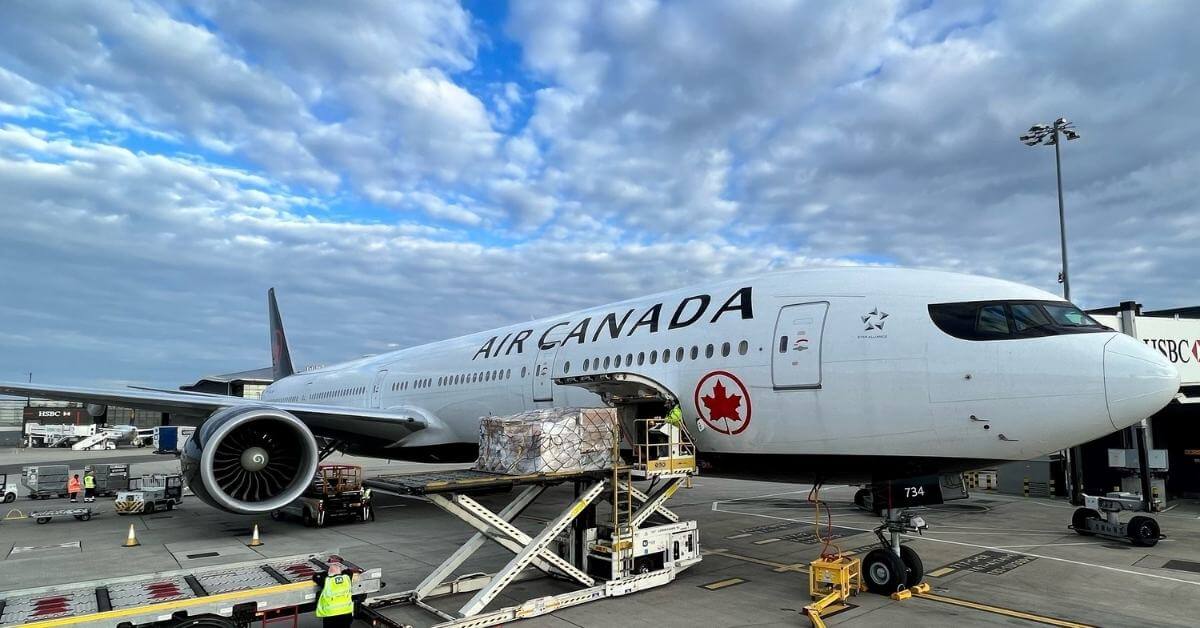
- Permits skateboards as carry-on items.
- The skateboard must meet the specified size and weight requirements the airline sets.
- Ensure the skateboard is well-protected to avoid any damage during the flight.
United Airlines:
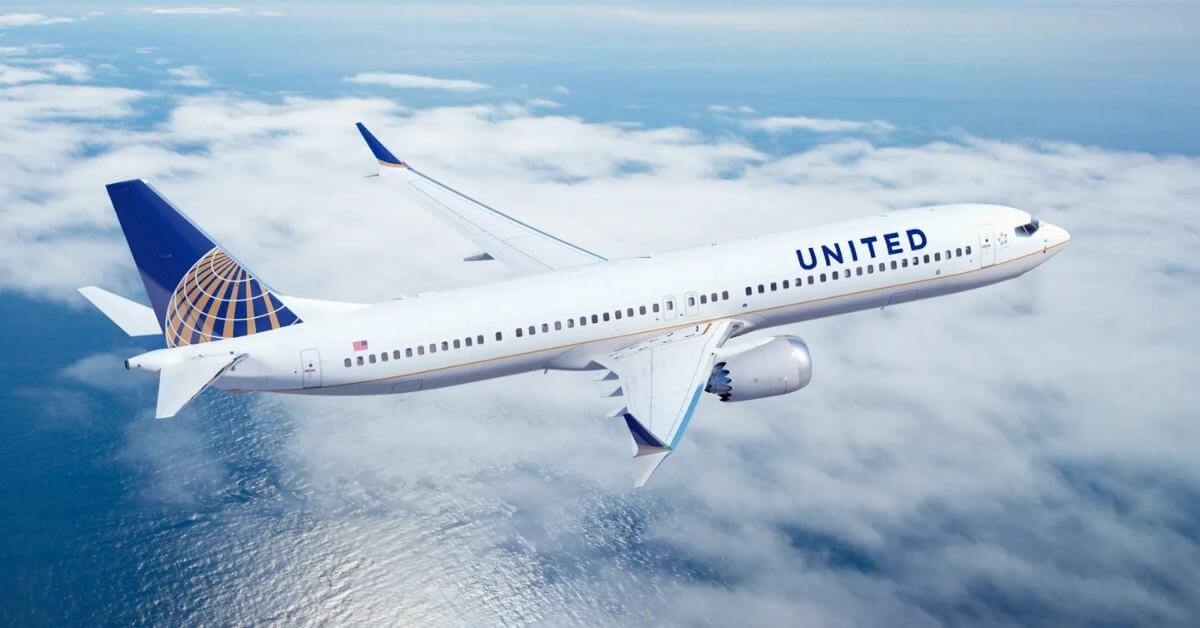
- Allows skateboards as checked items.
- The skateboard must adhere to the airline’s guidelines on size and weight.
- Packaging the skateboard in a durable bag or case is advisable to prevent potential harm.
Delta Airlines:
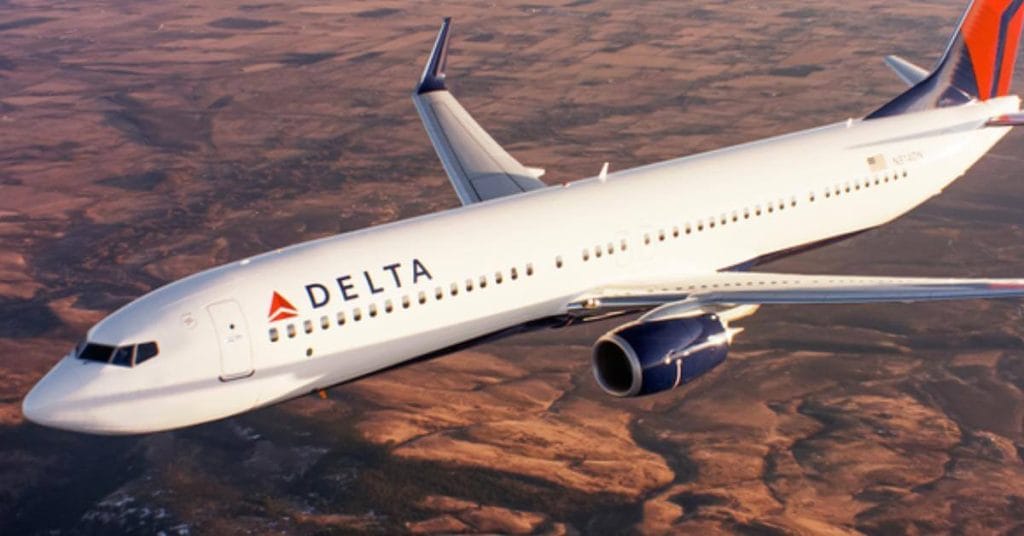
- Permits skateboards as both carry-on and checked items.
- Ensure the skateboard meets the specified size and weight limitations the airline imposes.
- Protective padding or covering is recommended to protect the skateboard from damage.
Airlines That Do Not Permit Skateboards on Board
While some airlines are flexible regarding the transportation of skateboards, others do not allow them on board for safety and security reasons. If you are planning to travel with a skateboard, it is important to note the following airlines’ policies:
Alaska Airlines
- Does not permit skateboards as carry-on.
- This policy is strictly enforced for the safety and convenience of all passengers.
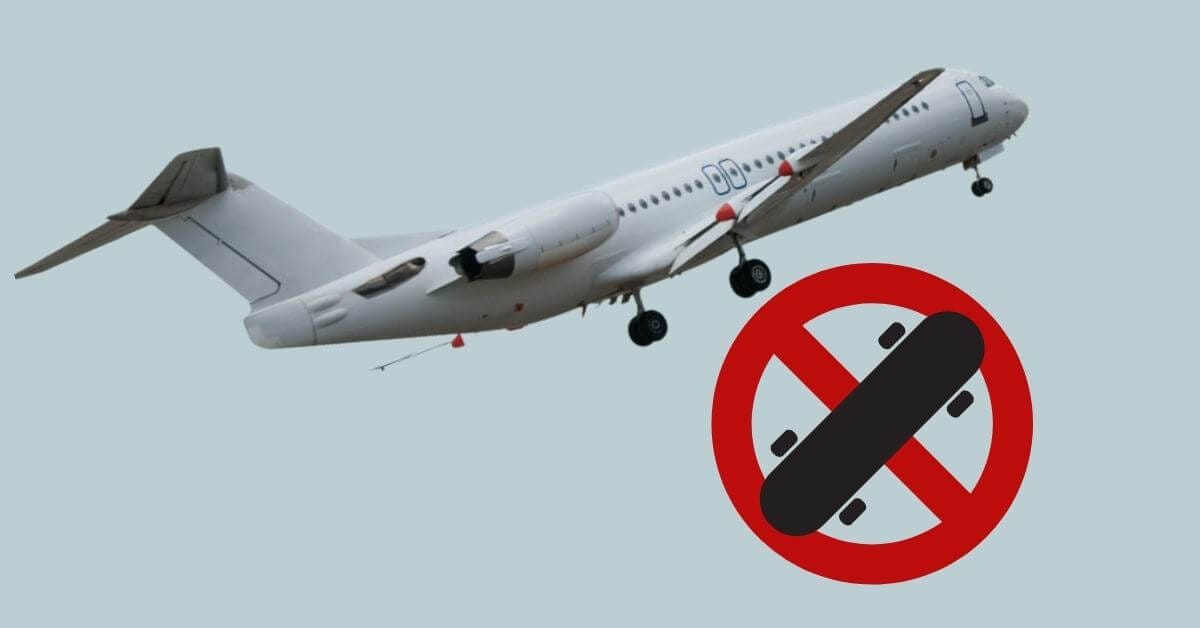
American Airlines
- Do not allow skateboards as carry-on.
- It is essential to find an alternative method of transportation for your skateboard if you are planning to fly with this airline.
Remember, verifying the specific policies of the airline you are planning to travel with before embarking on your journey is crucial. Pack and protect your skateboard accordingly to avoid any complications or unforeseen issues.
International Travel Considerations
Knowing the regulations regarding items you can bring on a plane is important when planning international travel. However, it’s worth noting that some airlines permit skateboards as carry-on or checked baggage, but restrictions may apply.
Variances in Regulations for Bringing Skateboards Across Different Countries
- Skateboard regulations differ across various countries, so it’s important to familiarize yourself with the rules before traveling internationally with your skateboard.
- Some countries prohibit skateboarding entirely, while others have specific restrictions or requirements.
- Research and understand your destination’s local skateboarding laws and regulations to avoid potential hassles or penalties.
- The regulations may vary based on factors such as the type of skateboard, the location, and the purpose of your visit.
- Check with your destination country’s respective embassy or consulate for accurate and up-to-date information on skateboarding regulations.
- Remember that regulations can change over time, so staying informed and updated throughout your trip is essential.
Tips for Traveling Internationally with a Skateboard
- Determine whether bringing your skateboard for your international trip is feasible and necessary.
- Additionally, consider the duration of your stay, the availability of skateboarding facilities, and the purpose of your journey.
If you decide to bring your skateboard, ensure it adheres to the transportation guidelines set by airlines and airports:
- Check the airline’s policy regarding sports equipment and skateboards to ensure compliance.
- Consider your skateboard’s size, weight, dimensions, and additional equipment or accessories.
- Secure your skateboard in a suitable travel bag during the journey.
- Familiarize yourself with the airline’s specific check-in procedures for transporting skateboards.
- Peak protective gear or what to wear when Skateboarding. Such as helmets and pads to comply with safety standards and enhance your skateboarding experience.
- Research skateboarding facilities, skateparks, and local skateboarding communities at your destination beforehand.
- Contact local skateboarders or skateboarding organizations for advice and recommendations on the best skating places.
- Be mindful of cultural norms and etiquette related to skateboarding in your destination country.
- Respect public and private spaces, and abide by local guidelines or skateboarding restrictions.
- Remember to prioritize safety and follow basic skateboarding etiquette, regardless of location.
Traveling internationally with a skateboard can be an exhilarating experience because it allows you to explore new skate spots and connect with the global skateboarding community.
By understanding the variances in regulations across different countries and following these tips, you can ensure a hassle-free journey that allows you to enjoy your passion for skateboarding while being respectful and considerate of local laws and customs.
Alternatives To taking a skateboard on the plane
Find alternatives to bringing it on the plane, including shipping it ahead, renting at your destination, or using collapsible skateboards for easy transportation.
If you’re planning a trip and wondering whether you can bring your skateboard on the plane, you might be relieved that there are alternatives to lugging it around.
Whether you’re worried about the hassle of transporting your skateboard or about potential damage during travel, options are available to ensure you can still enjoy skateboarding at your destination. Let’s explore a couple of alternatives below:
Renting Skateboards at Your Destination:
- Consider checking out local skate shops or rental services at your destination. Many popular skateboarding destinations offer skateboard rentals to visitors.
- Renting a skateboard can be a convenient option, especially if you’re traveling light or don’t want to risk damage to your skateboard during travel.
- Look for rental shops that offer a variety of skateboard types and sizes to suit your preferences and skill level.
- Engage with locals or do some research online to find reputable rental services. This way, you can get a quality skateboard that suits your needs.
Shipping Your Skateboard To Your Destination In Advance:
- If you prefer to use your skateboard but don’t want the hassle of bringing it on the plane, consider shipping it to your destination in advance.
- Contact shipping companies or courier services to explore the most suitable options for shipping your skateboard safety. Ask about special packaging requirements to protect your skateboard during transit.
- Bear in mind that shipping costs and delivery times may vary. So, planning and allowing enough time for your skateboard to reach your destination before arrival is advisable.
Exploring Local Skate Parks and Rental Services:
- Research skate parks at your destination. Many cities and towns have excellent skate parks where you can enjoy skateboarding without the need to bring your skateboard.
- Some skate parks even offer on-site rental services, allowing you to try different skateboards and meet fellow skateboarders.
- Take advantage of local knowledge by reaching out to skateboarding communities or using online platforms to connect with locals who can provide insights into the area’s best skate parks and rental services.
Considering these alternatives, you can still enjoy skateboarding during your travels without the hassle and worry of bringing your skateboard on the plane.
Whether you rent a skateboard at your destination, ship your own in advance, or explore local skate parks, you’ll have the opportunity to keep skateboarding a part of your journey.
Passenger Experiences and Etiquette
Bringing a skateboard on a plane is usually hassle-free, but being mindful of other passengers makes the journey smoother. Follow the airline rules below:
Be Respectful of Space
Airplanes have limited storage. Place your skateboard in the overhead bin or under your seat if possible. Avoid taking up extra space. Keeping it compact helps you and other passengers travel comfortably.
Ask Before Storing
If the overhead bin is full, ask a flight attendant for help. Never place your skateboard in a way that blocks aisles or exits. A quick question can prevent problems and keep your trip smooth.
Keep It Clean
A dirty skateboard can leave marks on seats or luggage. Before your flight, wipe it down to remove dirt. Keeping it clean shows respect for other passengers and avoids unnecessary complaints.
Avoid Riding Inside
Riding your skateboard inside the airport is not allowed. Security may stop you, and you could face fines. Walk with your board instead. This simple rule keeps you out of trouble.
Stay Calm If There’s an Issue
Some airline staff may not know skateboard policies. If they ask you to check your board, stay polite. Show them the airline’s policy on your phone if needed. Being calm helps resolve issues faster.
Frequently Asked Questions
How do you pack to take a skateboard on the plane?
Before packing a skateboard on a plane, disassemble it, wrap the deck in bubble wrap, and secure trucks and wheels in a separate bag. Then you can carry it as a personal item.
What airlines allow carrying a skateboard on the airplane?
Popular airlines like American Airlines, Delta, and United Airlines allow skateboards on their flights.
Can You Bring A Skateboard On The Plane?
Yes, you can bring a skateboard on the plane as a carry-on or checked baggage. However, checking with the airline regarding their specific policies and size restrictions is important. It is recommended to pack the skateboard securely to avoid any damage.
Final Verdict
Bringing a skateboard on a plane can be a possibility, but it’s crucial to understand the specific airline’s rules and regulations. Many airlines allow skateboards as carry-on or checked baggage based on size restrictions or requirements for protective packaging.
It’s recommended to contact the airline to find out their specific guidelines. Considering the safety and convenience of traveling with a skateboard is essential. So, if it’s unnecessary for your trip, it might be better to leave it at home and rent one at your destination.














